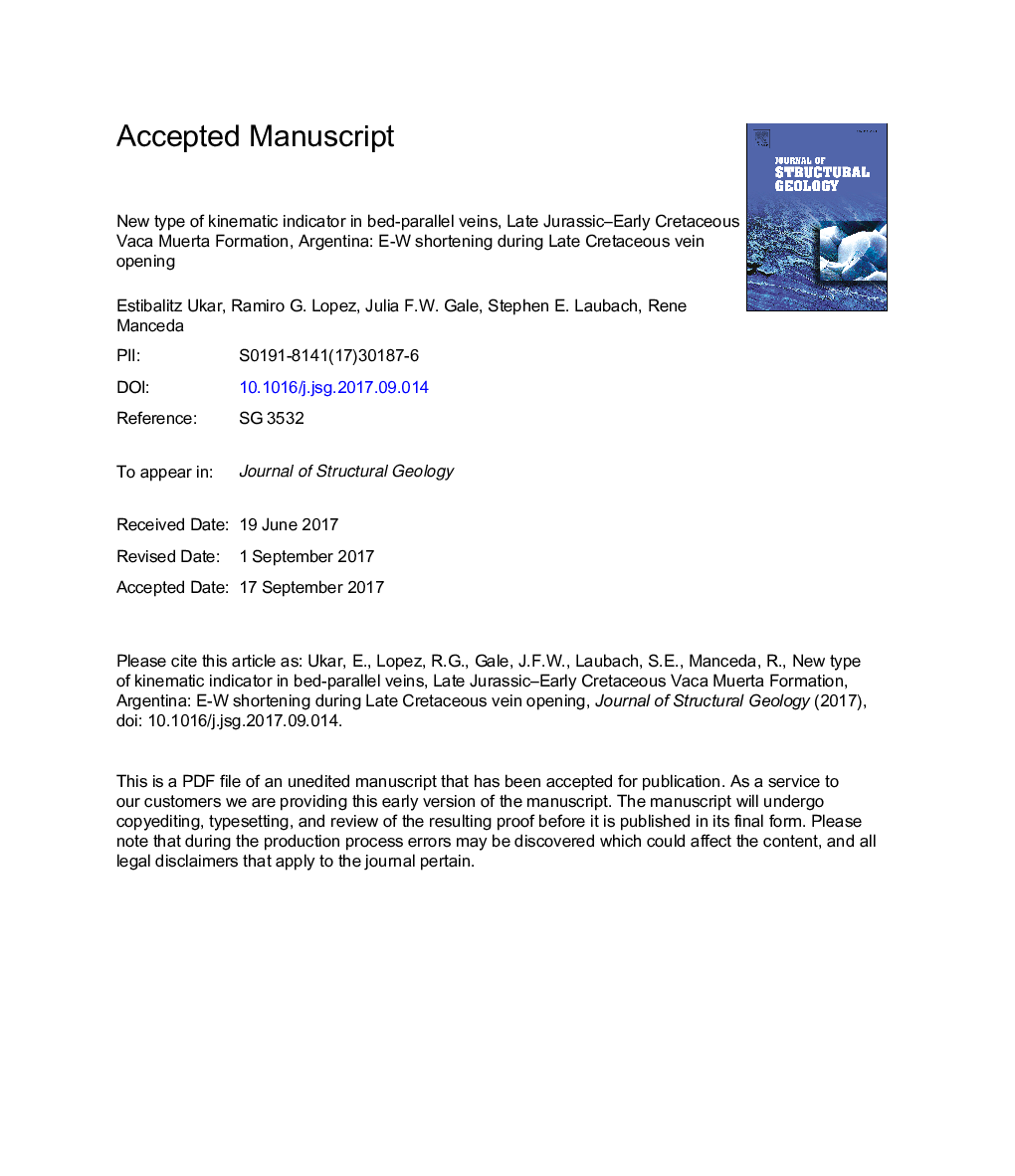| Article ID | Journal | Published Year | Pages | File Type |
|---|---|---|---|---|
| 5786233 | Journal of Structural Geology | 2017 | 50 Pages |
Abstract
In the Late Jurassic-Early Cretaceous Vaca Muerta Formation, previously unrecognized yet abundant structures constituting a new category of kinematic indicator occur within bed-parallel fibrous calcite veins (BPVs) in shale. Domal shapes result from localized shortening and thickening of BPVs and the intercalation of centimeter-thick, host-rock shale inclusions within fibrous calcite beef, forming thrust fault-bounded pop-up structures. Ellipsoidal and rounded structures show consistent orientations, lineaments of interlayered shale and fibrous calcite, and local centimeter-scale offset thrust faults that at least in some cases cut across the median line of the BPV and indicate E-W shortening. Continuity of crystal fibers shows the domal structures are contemporaneous with BPV formation and help establish timing of fibrous vein growth in the Late Cretaceous, when shortening directions were oriented E-W. Differences in the number of opening stages and the deformational style of the different BPVs indicate they may have opened at different times. The new domal kinematic indicators described in this study are small enough to be captured in core. When present in the subsurface, domal structures can be used to either infer paleostress orientation during the formation of BPVs or to orient core in cases where the paleostress is independently known.
Related Topics
Physical Sciences and Engineering
Earth and Planetary Sciences
Geology
Authors
Estibalitz Ukar, Ramiro G. Lopez, Julia F.W. Gale, Stephen E. Laubach, Rene Manceda,
